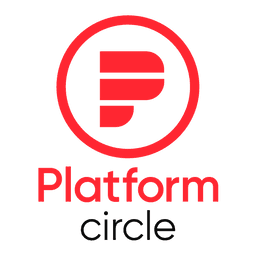In today’s competitive business environment, corporate executives are under increasing pressure to improve productivity. One way to do this is to adopt a supportive accountability approach to leadership.
What is supportive accountability? Why is it important to corporate executives? What are the challenges of implementing supportive accountability to corporate executives? This post will answer all these questions. It will also show you how to use Platform Circle to increase productivity by facilitating supportive accountability.

What is Supportive Accountability?
Supportive accountability is a model of leadership that combines supportive leadership and strong accountability to inspire and improve employee performance. It is based on the idea that holding someone accountable means to effectively form, communicate, and inspect the fulfillment of an expectation in a positive, principled way that enables people to achieve results now and in the future.
This leadership approach is a more effective approach than either supportive leadership or strong accountability alone. Supportive leadership focuses more on employee development and well-being. On the other hand, strong accountability is characterized by a focus on setting clear expectations, monitoring performance, and providing feedback.
Supportive accountability combines these two approaches by creating a work environment where employees feel supported and valued while being held accountable for their performance. This creates a sense of ownership and responsibility among employees. In the end, it can lead to improved productivity.
Why Supportive Accountability is Important for Corporate Executives
As a corporate executive, you have a lot of responsibilities and expectations to meet. You have to lead your team, manage your projects, deliver results, and ensure quality and customer satisfaction. Also, you have to deal with various challenges, such as changing market conditions, tight deadlines, limited resources, and diverse stakeholder needs.
You probably have several questions on your mind at this point. Some of them may include:
- How do you ensure that you and your team are productive and effective in such a complex and dynamic environment?
- How do you motivate and engage your employees to perform at their best?
- How do you foster a culture of excellence and accountability in your organization?
There are a few answers, including “supportive accountability.” By applying supportive accountability, corporate executives can achieve the following:
Set clear and realistic expectations for their employees and communicate with them regularly
Expectations are the standards or goals that you want your employees to achieve. They should be specific, measurable, achievable, relevant, and time-bound (SMART). Expectations should also be aligned with your organization’s vision, mission, values, and strategy.
Setting clear and realistic expectations helps your employees understand what is expected of them, why it is important, and how it will be measured. It also helps you monitor their performance and provide feedback accordingly. Communicating expectations regularly helps you keep your employees informed of any changes or updates, as well as reinforce their commitment and motivation.
Monitor employee performance and provide timely and constructive feedback
Monitoring performance means observing, measuring, and evaluating how well your employees are meeting the expectations you have set for them. Feedback means giving your employees information about their performance, such as what they are doing well, what they need to improve, and how they can do it.
Monitoring performance and providing feedback helps you track your employees’ progress and identify any issues or gaps that need to be addressed. It also helps you recognize your employees’ achievements and celebrate their successes. Timely and constructive feedback helps you correct any mistakes or problems before they escalate or affect the quality of work. It also helps you coach your employees to develop their skills and potential.
Offer support and resources to help employees overcome challenges and develop their skills
Support refers to providing your employees with the assistance, guidance, encouragement, or recognition they need to perform well. Resources, on the other hand, means providing your employees with the tools, equipment, materials, training, or information they need to do their job.
Offering support and resources helps you empower your employees to take ownership of their work and solve problems on their own. It also helps you create a positive and trusting relationship with your employees, where they feel valued and respected. Supportive leadership helps you foster a culture of learning and growth in your organization, where your employees are constantly improving their knowledge and abilities.
Recognize employee achievements and celebrate successes
Another key element of supportive accountability is recognizing employee achievements and celebrating successes. Recognition means acknowledging or rewarding your employees for their performance or contributions. Celebration refers to expressing joy or gratitude for your employees’ accomplishments or milestones.
Recognizing employee achievements and celebrating successes helps you boost your employees’ morale and motivation. It also helps you reinforce the desired behaviors and outcomes that you want from your employees. Recognition can be formal or informal, monetary or non-monetary, individual or team-based. Celebration can be simple or elaborate, public or private, planned or spontaneous. The key is to make it sincere and meaningful for your employees.
Hold employees accountable for their performance and address any issues or gaps
Accountability is ensuring that your employees are responsible for the outcomes of their work, whether positive or negative. It also means making sure that your employees face the consequences of their actions, whether rewards or sanctions.
Holding employees accountable helps you ensure that your employees are delivering the results that you expect from them. It also helps you maintain a high standard of quality and customer satisfaction in your organization. Addressing issues or gaps means taking corrective or preventive actions to resolve any problems or discrepancies that affect the performance of your employees or the organization. It also means providing feedback or coaching to help your employees improve their performance.
Document employee performance and use data to inform decisions and actions
Documenting performance involves recording, storing, analyzing, and reporting the data related to the performance of your employees. Data refers to the facts or figures that measure the performance of your employees, such as metrics, indicators, scores, ratings, etc.
Documenting performance and using data helps you have a clear and objective picture of how well your employees are performing. It also helps you have evidence to support your decisions and actions regarding employee performance management. Data-driven decisions help you make informed choices that are based on facts rather than opinions or assumptions. When your actions are data-driven, you can easily implement effective strategies and interventions that improve employee performance and organizational outcomes.
Challenges of Implementing Supportive Accountability to Corporate Executives
Supportive accountability is essential for every corporate executive who is seeking to increase their productivity and create a motivating and engaging work environment for their teams. However, implementing supportive accountability is not without challenges. Some of the common challenges that corporate executives may face are:
Resistance from employees or managers
Some employees or managers may resist supportive accountability because they perceive it as a threat to their autonomy, competence, or status. They may fear being judged, criticized, or punished for their performance. There is also a possibility that they distrust the intentions or motives of their leaders or peers who hold them accountable. Resistance may manifest as defensiveness, denial, avoidance, or sabotage.
To overcome resistance, corporate executives need to communicate the benefits and rationale of supportive accountability to their employees and managers. They need to explain how supportive accountability can help them achieve their goals, improve their skills, and advance their careers. They also need to demonstrate their commitment and support for their employees and managers by providing them with the resources, guidance, feedback, and recognition they need to succeed.
Lack of clarity or consistency in expectations or feedback
If expectations are not clear, realistic, or aligned with the organization’s vision and strategy, employees may not know what is expected of them, why it is important, or how it will be measured. Also, if feedback is not timely, constructive, or data-driven, employees may not know how well they are performing, what they need to improve, or how they can do it.
To address this challenge, corporate executives need to set SMART (specific, measurable, achievable, relevant, and time-bound) expectations for their employees and communicate them regularly. They also need to monitor employee performance and provide timely, constructive, and data-driven feedback. Finally, they should use multiple sources of data, such as metrics, indicators, scores, ratings, etc., to measure and evaluate employee performance objectively and accurately.
Difficulty in balancing support and accountability
Another challenge that corporate executives may face is the difficulty in balancing support and accountability. Finding the right balance between support and accountability can be tricky because different employees may have different needs, preferences, and styles.
To find the optimal balance between support and accountability, corporate executives need to adopt a flexible and adaptive approach. They need to assess the needs, preferences, and styles of their employees and tailor their support and accountability accordingly. Also, they have to solicit feedback from their employees and adjust their support and accountability as needed. They need to avoid being too harsh or too lenient with their employees and strive for a positive and principled way of holding them accountable.
How Platform Circle Can Encourage Supportive Accountability
Platform Circle helps you optimize key relationships in your life with powerful tools for collaboration, accountability, and personal development. Platform Circle is the ultimate platform for corporate executives who want to increase their productivity and create a motivating and engaging work environment for their teams. By using Platform Circle, you can apply supportive accountability in a simple but powerful way. You can also foster a culture of excellence and accountability in your organization.
Here is how Platform Circle can help you implement supportive accountability:
Organize key relationships in circles
You can create circles of key contacts, such as your employees, managers, peers, mentors, coaches, or clients, and manage your interactions with them. It helps you set clear expectations, monitor performance, provide feedback, offer support, recognize achievements, hold accountable, and document results for each circle member.
Create and manage projects and tasks
Platform Circle allows you to create shared or private projects and assign tasks to different circle members. You can collaborate through a message board with nested replies for easy communication. It also makes it possible to track progress, evaluate outcomes, and close or archive completed tasks and projects.
Invite mentors, coaches, managers, or accountability partners
On Platform Circle, you can invite mentors, coaches, managers, or accountability partners to your projects and circles. This way, you can share your vision, goals, challenges, and achievements with them. With this feature, you will also be able to schedule meetings, share public or private messages, and send or receive progress reports.
Integrate with your favorite apps
Finally, you can integrate Platform Circle with popular software such as Slack, Zoom, and Calendly. Using this platform also provides you with access to exclusive masterclasses, online resources, and community events to learn and grow.
Conclusion
You no longer have to struggle with productivity issues at your workplace and with your team members. This post has shown you how supportive productivity can help you solve this problem and where Platform Circle comes in to facilitate the process. Visit Platform Circle to begin today.




